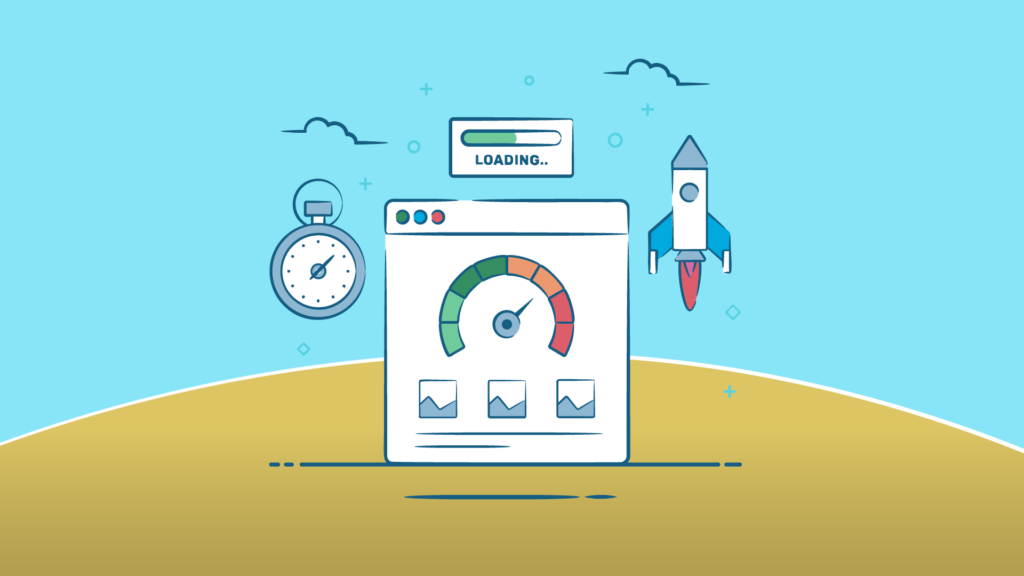
Boosting Website Speed: Strategies to Accelerate Load Times and Improve User Experience
In today’s digital age, speed is of the essence. From lightning-fast internet connections to instant messaging apps, our lives have become accustomed to swift interactions. This need for speed also extends to the web, where users expect websites to load quickly and efficiently.Slow-loading websites can frustrate users, leading to higher bounce rates and diminished trust in your brand.
Moreover, search engines like Google consider page speed as a ranking factor, which can impact your website’s visibility. In this comprehensive guide, we’ll explore the significance of website speed, the factors that affect it, and strategies to accelerate load times and enhance user experience.
The Significance of Website Speed
Website speed isn’t just a matter of convenience; it’s a fundamental component of a positive online experience. Here’s why it matters:
- User Experience: Fast-loading websites provide a smoother and more enjoyable user experience. Users are more likely to engage with your content, products, or services when they don’t have to wait.
- Search Engine Rankings: Search engines, especially Google, consider page speed as a ranking factor. Faster websites tend to rank higher in search results, potentially increasing your visibility to a broader audience.
- Conversion Rates: Speed impacts conversion rates directly. If your website is slow, users may abandon shopping carts, sign-up forms, or other critical actions, resulting in lost revenue.
- Mobile Friendliness: With the increasing use of mobile devices, a fast-loading mobile version of your website is essential. Slow mobile load times can deter and frustrate mobile users.
- Competitive Advantage: A faster website can give you a competitive edge. If your competitors’ sites are faster, you risk losing potential customers to them.
Now that we understand the importance of website speed, let’s delve into the factors that influence it and explore strategies to boost your website’s loading times.
Factors Affecting Website Speed
Several factors can influence a website’s loading speed. Identifying these factors is the first step toward improvement:
- Large Media Files: High-resolution images and videos that are not optimized for the web can significantly slow down your site.
- Unoptimized Code: Bloated or unoptimized code, such as HTML, CSS, and JavaScript, can increase loading times.
- Hosting Services: Shared hosting or inadequate server resources can result in slow loading times, especially during traffic spikes.
- Too Many HTTP Requests: Each element on a web page, like images, scripts, and stylesheets, requires an HTTP request. Too many requests can slow down loading.
- Lack of Browser Caching: Without browser caching, every time a user visits your site, the browser has to load all the elements from scratch.
- Uncompressed Content: Content that is not compressed, like large images or text files, takes longer to download.
- External Embedded Media: Embedding media from external sources can introduce delays if those sources are slow to respond.
- Not Using Content Delivery Networks (CDNs): CDNs can distribute your content across multiple servers globally, reducing server load and speeding up loading times.
Strategies to Accelerate Website Load Times
Now that we’ve identified potential culprits, let’s explore effective strategies to enhance your website’s speed:
Optimize Images and Media Files (Image Compression, Lazy Loading)
- Compress images and videos to reduce file sizes.
- Use responsive images to deliver appropriately sized media based on the user’s device.
- Implement lazy loading to load images only as they come into the user’s viewport.
Minify and Concatenate CSS and JavaScript Files
- Minify your CSS and JavaScript files to remove unnecessary characters.
- Concatenate multiple files into one to reduce the number of HTTP requests.
Leverage Browser Caching
- Configure your server to set appropriate cache headers for your web resources.
- Use a Content Management System (CMS) or plugins that enable easy caching.
Upgrade Your Hosting Plan
- Consider upgrading to a more robust hosting plan, especially if you’re experiencing high traffic.
Use a Content Delivery Network (CDN)
- Implement a CDN to distribute your website’s content across multiple servers worldwide, reducing server load and latency.
Optimize Server Performance
- Ensure your server’s software and operating system are up-to-date.
- Implement server-level caching mechanisms.
Minimize HTTP Requests
- Combine CSS and JavaScript files.
- Use CSS Sprites for icons and images.
- Limit the number of external scripts and fonts.
Enable GZIP Compression
- Configure your server to use GZIP compression to reduce file sizes transferred over the network.
Implement Asynchronous Loading for Scripts
- Load non-essential scripts asynchronously to avoid blocking page rendering.
Monitor Website Performance
- Regularly monitor your website’s performance using tools like Google PageSpeed Insights, GTmetrix, or Pingdom.
- Use server monitoring tools to identify server-side issues.
Content Review and Cleanup
- Regularly review and clean up your website’s content, removing outdated or unnecessary elements.
Optimize Mobile Performance
- Ensure that your website is responsive and loads quickly on mobile devices.
- Consider using Accelerated Mobile Pages (AMP) for content-heavy pages.
Website speed is a critical aspect of user experience and online success. Slow-loading websites can frustrate users, impact search engine rankings, and decrease conversions. By identifying the factors affecting your website’s speed and implementing the strategies discussed in this guide, you can significantly enhance load times, provide a superior user experience, and stay competitive in the digital landscape.
Remember that website speed is an ongoing concern, and continuous monitoring and optimization are essential to maintain fast loading times.


